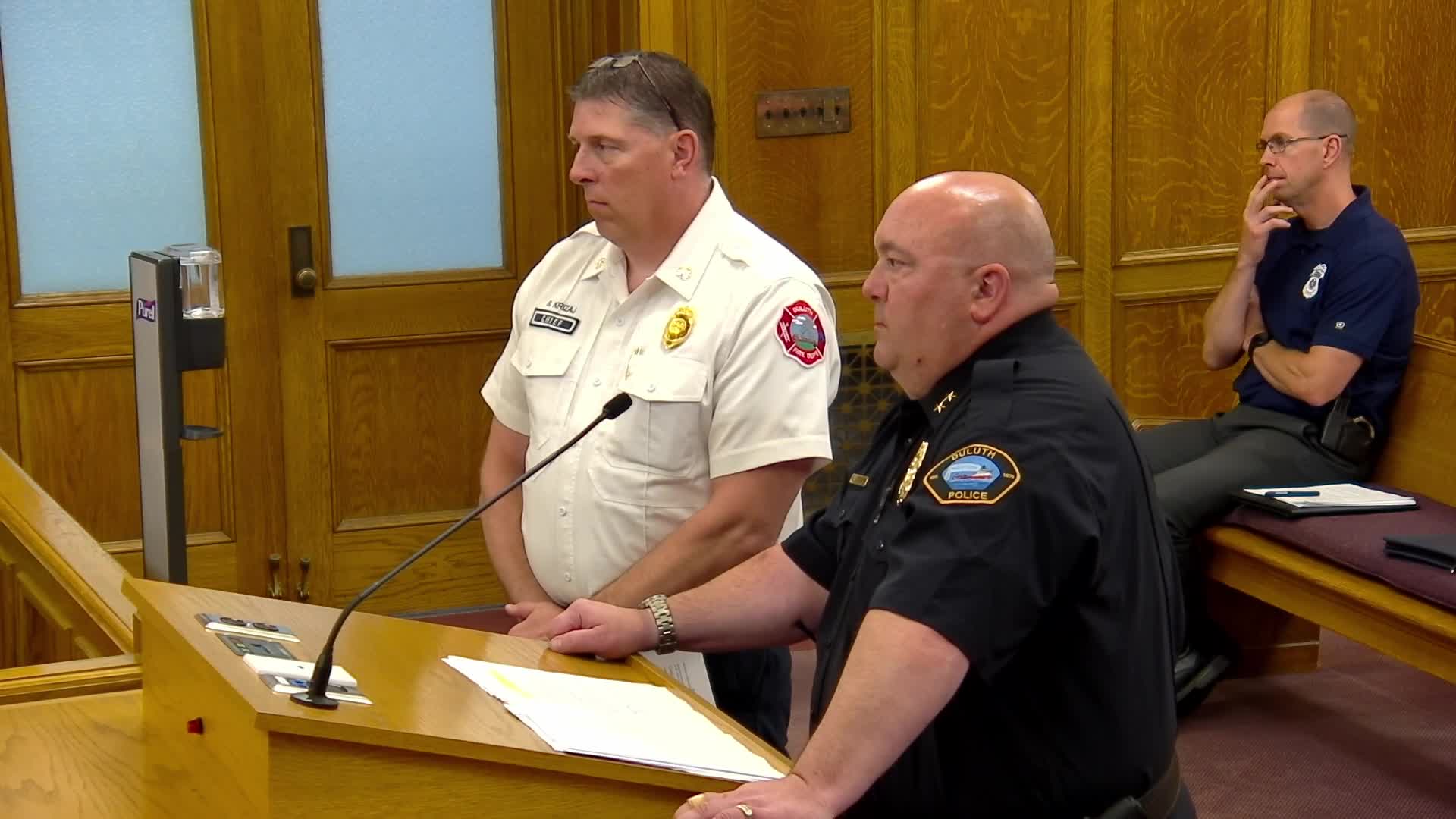New ordinance raises concerns over First Amendment rights
July 11, 2024 | Duluth, St. Louis County, Minnesota

This article was created by AI summarizing key points discussed. AI makes mistakes, so for full details and context, please refer to the video of the full meeting. Please report any errors so we can fix them. Report an error »

In a recent government meeting, significant discussions centered around proposed updates to local ordinances, particularly concerning public disturbances and the implications for community gatherings. Council members raised concerns about the potential for bias in enforcement, especially regarding religious practices and college student gatherings.
Councilor Owl highlighted the risks of misinterpretation of activities, such as prayer gatherings, which could be reported as suspicious. The Chief of Police reassured that thorough investigations would precede any misdemeanor charges, emphasizing the need for probable cause and the involvement of supervisory staff before any arrests are made. This response aimed to address fears of racial bias and wrongful accusations that could arise from the new ordinance language.
The conversation also touched on the impact of the proposed changes on college students hosting parties. The Chief indicated that if such gatherings were deemed to disturb the peace, they could indeed lead to misdemeanor charges. This raised further questions about the balance between maintaining neighborhood tranquility and respecting the rights of individuals to gather.
Another contentious point was the proposed classification of blocking streets and sidewalks during protests as a misdemeanor rather than a petty offense. Councilor Mayo expressed concern that this could infringe on First Amendment rights, particularly during an election cycle when public demonstrations are likely to increase. The Chief clarified that the ordinance aims to hold organizers accountable for ensuring peaceful assemblies and that the city is committed to constitutional compliance.
The meeting concluded with discussions on the procedural aspects of obtaining permits for public gatherings, with officials noting that the timeline for approval could extend over several weeks. This raised additional questions about the feasibility of spontaneous protests and the potential legal repercussions for organizers who fail to secure permits.
Overall, the meeting underscored the complexities of updating local ordinances in a way that balances community safety, individual rights, and the need for clear enforcement guidelines.
Councilor Owl highlighted the risks of misinterpretation of activities, such as prayer gatherings, which could be reported as suspicious. The Chief of Police reassured that thorough investigations would precede any misdemeanor charges, emphasizing the need for probable cause and the involvement of supervisory staff before any arrests are made. This response aimed to address fears of racial bias and wrongful accusations that could arise from the new ordinance language.
The conversation also touched on the impact of the proposed changes on college students hosting parties. The Chief indicated that if such gatherings were deemed to disturb the peace, they could indeed lead to misdemeanor charges. This raised further questions about the balance between maintaining neighborhood tranquility and respecting the rights of individuals to gather.
Another contentious point was the proposed classification of blocking streets and sidewalks during protests as a misdemeanor rather than a petty offense. Councilor Mayo expressed concern that this could infringe on First Amendment rights, particularly during an election cycle when public demonstrations are likely to increase. The Chief clarified that the ordinance aims to hold organizers accountable for ensuring peaceful assemblies and that the city is committed to constitutional compliance.
The meeting concluded with discussions on the procedural aspects of obtaining permits for public gatherings, with officials noting that the timeline for approval could extend over several weeks. This raised additional questions about the feasibility of spontaneous protests and the potential legal repercussions for organizers who fail to secure permits.
Overall, the meeting underscored the complexities of updating local ordinances in a way that balances community safety, individual rights, and the need for clear enforcement guidelines.
View full meeting
This article is based on a recent meeting—watch the full video and explore the complete transcript for deeper insights into the discussion.
View full meeting
